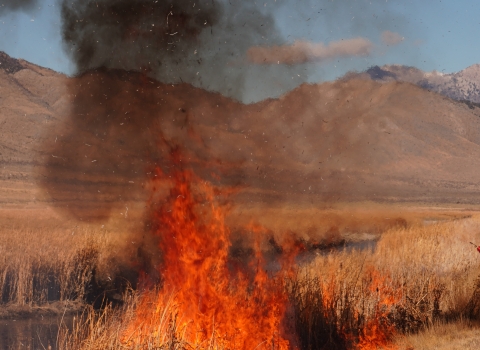The U.S. Fish and Wildlife Service has completed initial reviews of petitions to list the Aztec gilia, Clover’s cactus and Suckley’s cuckoo bumble bee under the Endangered Species Act (ESA). After reviewing the information in the petitions for each of these species, the Service concludes there is substantial information that listing under the ESA may be warranted.
The Suckley’s cuckoo bumble bee is a fuzzy insect found in grasslands and meadows across the western U.S. Though they sport typical yellow and black bee colors, the Suckley’s cuckoo bumble bees lack pollen-collecting baskets on their legs. As a result, they cannot produce workers to support the colony and must parasitize other bee colonies. Suckley’s cuckoo queens sneak or fight their way into these colonies, supplant the existing queen and lay their own eggs. Potential threats to the Suckley’s cuckoo bumble bee include livestock grazing, habitat loss from fire management, disease or loss of hosts, pesticide use for bark beetle management, agricultural intensification, climate change climate change
Climate change includes both global warming driven by human-induced emissions of greenhouse gases and the resulting large-scale shifts in weather patterns. Though there have been previous periods of climatic change, since the mid-20th century humans have had an unprecedented impact on Earth's climate system and caused change on a global scale.
Learn more about climate change and reduced genetic diversity.
The Aztec gilia and Clover’s cactus inhabit the badlands of northwestern New Mexico. The diminutive Clover’s cactus can be identified by its lengthy spines, compact growth pattern, and pink blossoms. The Aztec gilia stretches a bit higher above the desert floor and sports trumpet-shaped fuchsia flowers. Potential threats to both species include oil and gas development, off-road vehicle use, livestock grazing, predation and climate change. Additionally, the Clover’s cactus is considered desirable in horticultural markets and may be subjected to illegal collection.
The ESA allows citizens to petition the Service to add species to the Endangered Species Act, remove species from the list, and to reclassify species already on the list. To the maximum extent possible, the Service issues a finding on the petition within 90 days of the petition’s receipt.
Substantial 90-day findings represent a relatively low bar, requiring only that the petitioner provide information that listing may be warranted. The next steps involve in-depth status reviews and analyses using the best available science and information to arrive at a 12-month finding.
The Federal Register docket numbers and links for the substantial petition findings in this batch are:
Species | Range | Docket Number | Docket link |
Aztec gilia | NM | FWS–R2–ES–2020–0095 | |
Clover’s cactus | NM, CO | FWS–R2–ES–2020–0096 | |
Suckley’s cuckoo bumble bee | AK, CA, CO, ID, MT, ND, NY, SD, OR, WA, and Canada | FWS–R7–ES–2020–0097 |
The notice for the above findings will be available in the Federal Register Reading Room on May 10, 2021 at https://www.federalregister.gov/public-inspection on the 2021 Notices link under Endangered and Threatened Wildlife and Plants.
For more information on the ESA listing process, including 90-day findings and status reviews, please go to www.fws.gov/endangered/esa-library/pdf/listing.pdf.



